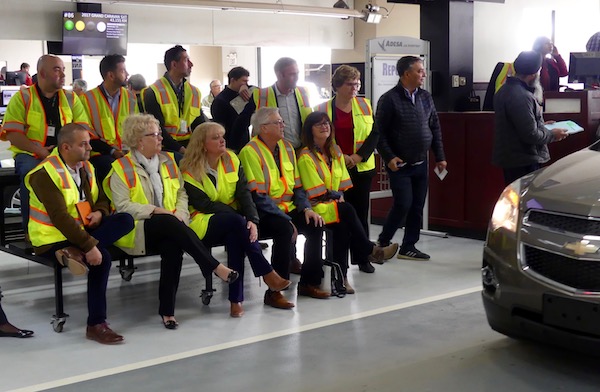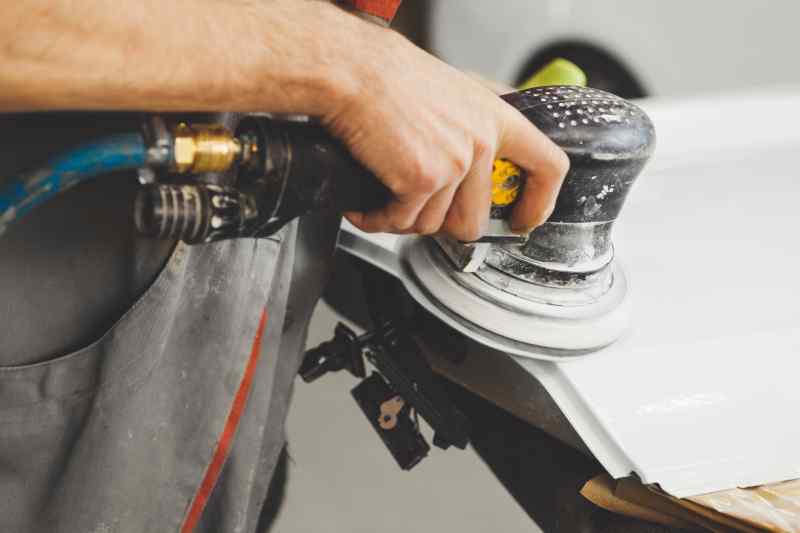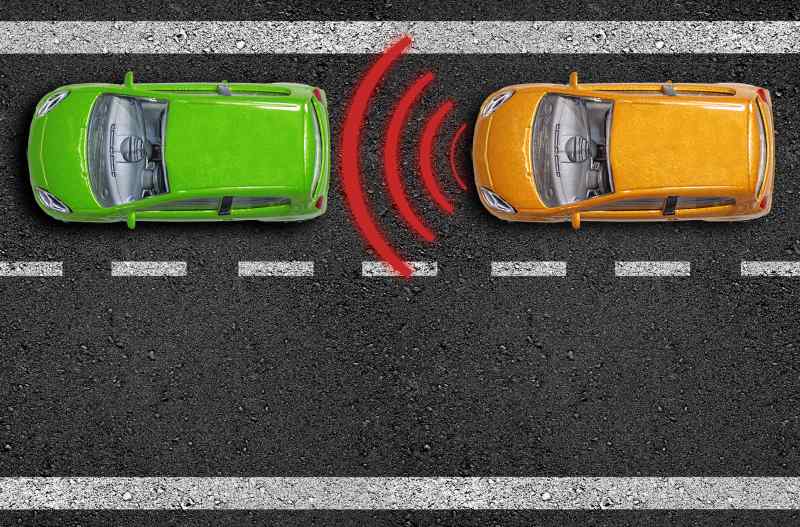
Cycling your fleet the right way is a critical business decision. It impacts everything from costs, to productivity, to safety and driver happiness.
To help you evaluate and improve your vehicle cycling strategies, we reached out to the industry experts at KAR Auction Services and its business unit, ADESA: Trevor Henderson and Tom Kontos.

They share insights on:
- the different elements involved in vehicle cycling
- critical areas fleet managers often overlook
- new technology trends
- how to make the best decisions related to cost and spend
Let’s get started!
Can you tell us about your professional backgrounds and current roles?
Trevor: I’m the chief operating officer for ADESA in Canada. I started with ADESA on the technology side, helping to build out digital tools and platforms, and have now been in the business for about 15 years.
I’m responsible for physical auction operations encompassing 14 auction facilities in Canada coast to coast, as well as online programs and platforms. That includes things we do for auto manufacturers and captive finance companies to develop and support private label remarketing platforms where customers can sell their inventory to franchise dealer networks. We do other online initiatives as well. Digital is as important as physical to the auction industry these days.
Tom: I’m the chief economist for KAR Auction Services. I’ve been an industry analyst and economist for the auction industry for 25 years now.
We have a group called KAR Analytical Services that performs studies for our clients on a regular basis, both at the high level (industry trends) and at the micro-level for specific clients. We’re in a key position to see what’s going on with the prices of used vehicles, and what the best remarketing strategies are that can help maximize vehicle values.
What is vehicle cycling and why is it so important for fleet managers to have a firm grasp of it?

Trevor: Vehicle cycling can mean different things to different entities and it is very important that fleet clients work closely with their fleet management company to assess options and define strategies. The team at Foss are experts in this and can guide their clients in these critical decisions.
From our perspective, at a high level, a fleet manager will work with Foss to identify when is the right time to de-fleet—which is somewhat answered by “When is the right time to purchase?”
When we’re thinking about cycling the vehicles in a fleet, are we trying to work towards a certain return on those assets? Are we trying to make money when we resell them? Are we trying to minimize the book loss? This will be different for each client.
We know Claudio from Foss and his team pay very close attention to the market. He’s in contact with Foss customers advising: “Prices for the types of vehicles you have in fleet are very strong right now. If there’s any that you want to cycle, now would be a good time because we’re seeing good prices at the auction.”
So the critical piece is that you have someone (like Claudio) who is paying very close attention to the market. Claudio uses a lot of the data we provide both generally to the market, and to him specifically, which he uses to guide his clients.
Tom: There’s a discipline that can be applied toward fleet replacement optimization. You can track and pre-estimate what both the costs and depreciation expense of a vehicle will be over time.
There’s actually a methodology that can be applied toward optimizing the replacement of a vehicle based on those types of costs. You’ve got the operating cost—gas, oil, keeping it maintained—but there are also capital investment costs in replacing parts, tires or other things that are more big-ticket maintenance expenses.
When a vehicle reaches an age in kilometres that indicates it’s time to replace tires and do other sorts of maintenance expenses, it might make sense at that point to weigh those costs against replacing the vehicle. Depreciation expenses are being considered over that time too.

There’s also an employee satisfaction component. You don’t want your employees to be in a vehicle that’s starting to get run down. It’s also about presentation to your clients, because a lot of times the vehicles are being used by salespeople who are going to make calls and take customers out, for example.
So there are a lot of other considerations besides the physical dynamics of the vehicle’s maintenance curve and wear and tear.
Additionally, if you have vehicles that are being used in mining situations, or more utility type vehicles—they undergo a fair amount of wear and tear in a shorter period of time. So you might have to replace those just to keep the business functioning.
From an economic standpoint, there’s a seasonality to our business as well. There are times within the year that would determine when it’s a good or bad time to send a car to auction or replace it.
There are also non-seasonal but still cyclical considerations. If we’re at a time where there are a lot of cars coming back because of leases, maybe you want to brace yourself for some softening in prices. And so maybe your depreciation will be a little higher than forecast when the car was purchased.
What do fleet managers often overlook when buying and selling vehicles? What are the consequences of this oversight?
Tom: Often, a real good “defleeting” time of year is when you’re considering buying a new vehicle, and that’s often at the model year changeover time.
The model year changeover used to be concentrated in September or October, but now model years are a little more broad. New models might be introduced at a different time of the year and they would still be a 2020 model even though they’re released at some other time in 2019.
But still, generally September/October is a timeframe where a lot of defleeting should take place.
Trevor: One of the things we would recommend for any fleet, is to use the resources of your fleet management company (FMC) who should be paying attention to the market.

Auction Day with Foss National Leasing at ADESA
In most markets in Canada a lot of the defleeting does happen in the fall. That has some impact. It brings a lot of vehicles into the market, which often brings a lot of buyers in. On the surface that can generate good demand, if you as the fleet manager have comparable vehicles, there will be lots of eyeballs on them.
But that excess supply can put downward pressure on prices. Ways to differentiate your vehicles from that mass of cars include asking, how were they configured when they were first purchased? Are you doing different things in the build of the car than other fleets are?
And also, the FMC you’re working with, in this case Foss, should be a highly respected seller at auction. People know Foss stands behind its cars, and that Foss cars are well maintained. All of these things make a difference when it’s time to sell.
Another thing is —and we’ll admit it’s not always true—but quite often, selling the car sooner rather than later is the best decision.
There are absolutely exceptions to that. But depending on where we are in the cycle and seasonality, not selling the car on its first offer, when you’ve had reasonable offers on it, and then holding it for a few more weeks before reselling it isn’t always the best option.
So being vigilant about when to make the decision to sell, and working with your FMC to set reasonable reserves based on their guidance is critically important for getting the vehicles into the market so that they can sell.
Everybody has a value for that vehicle on their books, but that may not be realistic. It can depend on your accounting practices, what you purchased it for, and how the market has changed in the two-to-three years that the vehicle was on the road.
It’s critical learning for many fleet customers that book value isn’t necessarily market value. If you resist that reality, you could end up taking greater losses because you’re holding out for a better price than maybe the market will ever give you.
Tom: Another thing that’s been overlooked is the role of reconditioning, and this is kind of a catch-22. Because, what is comes down to is, FMCs are spending their clients’ money if they do reconditioning.

Here, I’m defining reconditioning in more of a narrow sense, taking out dings in doors for example, something that will permanently improve the condition of the vehicle. There’s an expense there that the client will see, but they won’t necessarily know what incremental gain there was from doing the reconditioning, because there’s no way to know what the car would have sold for if you hadn’t done it.
FMCs struggle with this - they want to maximize the value of the vehicle. They know there are certain things you can do “recon” wise to get maximum dollar for the vehicle, but they're reluctant to do them, because the client won’t be able to measure it.
One of the things my team does is show what a similar make, model and kilometre vehicle would get if you didn’t do reconditioning versus if you did. This shows ROI and substantiates that there was money made, but this requires an after the fact analysis, and you still have to sell the fleet client on the value gained over investment spent.
So this isn’t an overlooked area, but it’s one in which there’s always a bit of proving that needs to be done. But it’s definitely an area of opportunity to minimize depreciation.
(Read more: The Best-Kept Secret to Increasing Fleet Pickup Truck Value)
What trends are you seeing in fleet buying and selling? Are you noticing anything in regard to new vehicle technologies?
Trevor: I’ll talk broadly about Canada. We haven’t seen significant penetration of electric vehicles in the traditional fleet space yet. I’m sure it’s coming but it hasn’t been a significant factor to date.
What we hear from a variety of FMCs is that they’re struggling to have conversations with their clients about the value of a lot of the new technology in vehicles—for example, advanced driver assistance systems, and other relatively expensive options in cars.

It’s unclear how these options are going to fare in the resale market two, three, four years out. They're adding a lot of cost up front, but it's not clear whether the client will be able to recoup that cost.
Any fleet wants the best technology available in the vehicles for their drivers, but at some point maybe the economics don’t make sense. Ultimately, we don’t have enough data on it yet.
Tom: This falls into the realm sometimes of the less tangible considerations, for example fleets might want to have a green image. So they may choose to equip drivers with electric or hybrid vehicles more from the standpoint of an image, and less based on a pure economic analysis.
There’s the safety element as well. If companies want to stress that the safety of their drivers is paramount, they might insist on certain safety systems in the vehicles.
How can fleet managers save the most money when buying and selling vehicles?
Trevor: As important as saving money is, the FMCs should also be working to make sure clients understand that maximizing returns on the asset is equally important.
Making decisions not necessarily focused on cost reduction may ultimately derive greater values at resale. So it’s a balancing act.
Something we see our FMC clients do well is, they focus on growing their brand. At an auction, there are a lot of entities trying to sell vehicles to dealers. Having a remarketing brand that differentiates you from other sellers is very important.
Foss is known for selling a very high percentage of the vehicles they bring to auction, so that conversion rate is very important. If you want dealers to be present in the lane and bidding on the vehicles, they have to feel comfortable that the seller is really there to sell, and is not just testing the market for values.
And full disclosure is essential—telling prospective buyers everything you know about the history of the vehicles. Knowing when to sell, and listening to someone like Claudio for example, allows you to remarket your vehicles when demand is highest, which will generate the best return on your asset.
As far as savings, I want to emphasize that there is a cost in holding the vehicles. Once you de-fleet them, they’re still sitting on your books as long as you hold on to them.
Quite often, if you’re bringing the vehicle to market, even if you don’t get the price you were hoping for, it might still be the best time to sell. You have to factor in, if I don’t sell it today and hold this asset for another week, what is my carrying cost? Is it reasonable that I will get a price higher than that? Or am I in a market where prices are starting to decline, whether due to the volume of vehicles in the market, or seasonality?
It all starts to become very complex, and again that’s where having someone like Claudio as a resource is critical. Another thing is being cautious about getting caught up in the latest and greatest technologies in the vehicles. There are certain things that could go wrong in a vehicle that you will need to resolve before you can remarket it. That can add a lot of cost.
So sometimes simple is better. You don’t want a vehicle that is so basic that there is no demand for it, but you also don’t want one with a lot of inherent potential costs. So you want to ensure that the things you’re adding to the car are adding value and not just exposure down the line.
Get to Know the Author
Basil Marcus is the president of Foss National Leasing and LeasePlan Canada. With a lifelong passion for automotive, he journeyed from business development to leading one of Canada's top fleet management companies.
Meet our team







